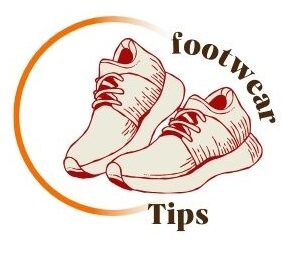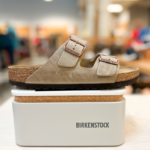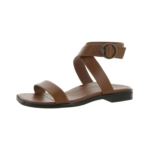Address:
- 2365 Hood Avenue, San Diego, CA, 92123
Barefoot shoes alone do not provide a complete solution for foot health, as discussed by Katy Bowman. By understanding the limitations of barefoot shoes, we can make informed decisions about our footwear choices.
While barefoot shoes offer benefits like improved proprioception and foot strength, they may not address specific foot issues or provide adequate support for all individuals. We will explore why barefoot shoes are not a one-size-fits-all solution and how incorporating other footwear options and foot-strengthening exercises can contribute to overall foot health and well-being.
Let’s delve deeper into the complexities of foot health and the role of footwear in maintaining healthy, happy feet.

Credit: anyasreviews.com
Discover the growing popularity of barefoot shoes, as explained by expert Katy Bowman. Uncover why they may not offer a complete solution for optimal foot health and mobility. Explore the nuances of incorporating barefoot shoes in your lifestyle for better movement patterns.
In recent years, there has been a surge in the popularity of barefoot shoes. These shoes are designed to mimic the feeling of walking barefoot, allowing the foot to move naturally and providing a more minimalist approach to footwear. While there are certainly benefits to wearing barefoot shoes, they are not a complete solution to foot health. In this article, we will explore the appeal of minimalism in footwear and the historical shift that led to the rise of barefoot shoes.Katy Bowman, a renowned biomechanist, emphasizes the significance of movement in our daily lives. Her approach goes beyond the traditional understanding of exercise to encompass the impact of movement on our overall well-being. In her quest to promote a holistic perspective on movement, Bowman delves into the limitations of barefoot shoes, highlighting that they are not the complete solution to our movement needs.
Katy Bowman, a distinguished expert in biomechanics, has dedicated her career to unraveling the complexities of human movement. Her insights challenge conventional beliefs about footwear and movement, paving the way for a more comprehensive understanding of our body’s needs.
While barefoot shoes have gained popularity for their potential benefits, Katy Bowman urges us to look beyond footwear and consider the broader context of movement. She advocates for a holistic approach that encompasses not only the type of shoes we wear but also the diverse ways in which we engage our bodies in daily activities.
Our feet are intricately designed, comprising 26 bones, 33 joints, and over 100 muscles, tendons, and ligaments, all working in harmony to support our body weight and facilitate movement.
Flexibility and strength are essential for the natural function of the foot, enabling it to adapt to various surfaces and absorb impact during movement.

Credit: www.youtube.com
Barefoot shoes may not fully solve all foot issues, as discussed in the podcast with Katy Bowman. While they offer benefits, they also have limitations, such as lack of support and protection in certain environments. It’s important to consider individual needs and consult a professional for a comprehensive solution.
Barefoot shoes have gained popularity in recent years as a way to mimic the feeling of walking or running barefoot. However, it is important to recognize that these shoes do have limitations and may not be the full solution for achieving a truly natural gait and foot function.
One of the main limitations of barefoot shoes is that they can give a false sense of what it means to move naturally. While these shoes do provide a more minimal and flexible sole compared to traditional footwear, they still have some level of cushioning and support. This can trick the wearer into thinking they are experiencing the same sensation as being completely barefoot.
It is important to remember that true barefoot movement involves direct contact between the feet and the ground, allowing for sensory feedback and natural adjustments in posture and gait. Barefoot shoes, although they offer some benefits, cannot fully replicate this experience.
Another limitation of barefoot shoes is that they often focus solely on the feet, neglecting the impact that footwear can have on the rest of the body. While it is true that the feet play a crucial role in overall movement and alignment, they are just one piece of the puzzle.
By solely focusing on the feet, we may overlook other factors that contribute to a healthy and functional body, such as hip mobility, core strength, and overall body alignment. These aspects are essential for optimizing movement patterns and preventing injuries.
In order to achieve a truly holistic approach to movement, it is important to consider the entire body and how it functions as a unit. This means addressing not only the feet but also the ankles, knees, hips, and beyond. Barefoot shoes alone may not provide the comprehensive solution needed for overall body health and function.
Varied terrain is crucial for the health of our feet and bodies. Our modern lifestyles often limit our exposure to diverse natural environments, leading to weakened muscles and decreased mobility. Katy Bowman, a biomechanist and author, stresses the importance of varied terrain for foot health and overall well-being.
Barefoot shoes aim to mimic the experience of walking barefoot, allowing the feet to move more naturally. However, they may not fully replicate the varied terrain found in natural environments. Without exposure to different surfaces, such as grass, sand, and rocks, our feet miss out on the opportunity to adapt and strengthen.
In today’s society, we often navigate flat, predictable surfaces, such as pavements and floors. This lack of diversity in terrain can contribute to foot and musculoskeletal issues. Embracing varied terrain, on the other hand, encourages the development of stronger, more resilient feet and lower limbs.
Incorporating movement nutrition goes beyond just wearing barefoot shoes. Join Katy Bowman as she explains why they aren’t the complete solution for optimal foot health and movement. Discover the importance of a holistic approach to movement and how it can benefit your overall well-being.
Start by slowly incorporating barefoot shoes into your routine.
Engage in foot-strengthening exercises like toe spreads and heel raises.

Credit: anyasreviews.com
Our feet play a vital role in our overall health and well-being.
Understanding the impact of our footwear choices on the environment is crucial.
Wearing barefoot shoes for extended periods can lead to overuse injuries and strain on the feet, especially if you are not used to them. It is important to gradually introduce them into your routine and balance them with other types of shoes.
Barefoot shoes are not suitable for all activities, especially those that require a lot of support or cushioning. They are best for low-impact activities like walking, yoga, and strength training.
Barefoot shoes can help improve foot strength and flexibility, which may alleviate some foot problems like plantar fasciitis. However, it is important to consult with a healthcare professional before using them as a treatment method.
Wearing barefoot shoes can improve foot strength, flexibility, and balance. It can also help improve posture and reduce the risk of injuries. Additionally, they are lightweight and allow for a more natural foot movement.
While barefoot shoes offer several benefits for foot health and natural movement, they are not the ultimate solution for overall physical well-being. Katy Bowman emphasizes the importance of a holistic approach to movement and encourages individuals to incorporate a variety of movement practices into their daily lives.
By prioritizing diverse movement patterns, we can optimize our body’s functionality and reduce the risk of injury or chronic pain. So, let’s embrace barefoot shoes as part of a larger movement journey towards better health and vitality.
Get our most valuable tips right inside your inbox, once per month!
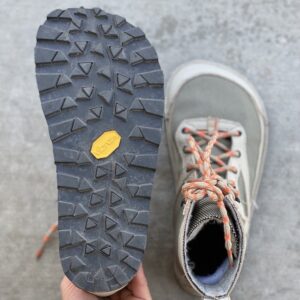
Looking for walking shoes with a wide toe box? Check out these top options for men and women that offer comfort, support, and a roomy

Looking for cheap barefoot shoes? Check out WHITIN Men’s Ultra-ventilated Barefoot Shoes for $19.99 on Amazon.com or Men’s Quick-dry Barefoot Shoes for $8.47 on Temu.
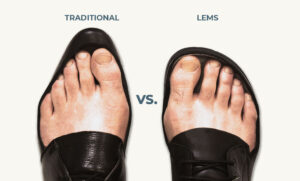
Foot-shaped shoes are available in various brands such as Lems Shoes, Padgene, Barekick, WHITIN, relxfeet, Xero Shoes, New Balance, Earthing Harmony, Atoms, BRONAX, Hike Footwear,
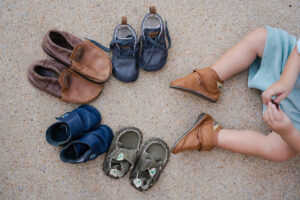
Toddler Barefoot Shoes provide a minimalist and lightweight option for kids to splay their feet naturally while walking, running, or playing sports. These shoes have
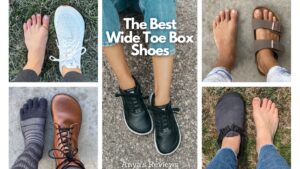
Discover a variety of wide toe box shoes for women in Austin, Texas, including options from Orthofeet, WHITIN, Temu, and more. These shoes offer comfort
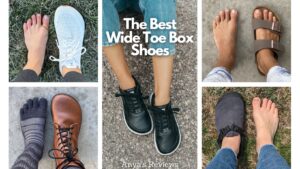
Toe box shoes provide ample space for the toes, allowing them to move freely and comfortably. They are available in various styles and sizes, with
